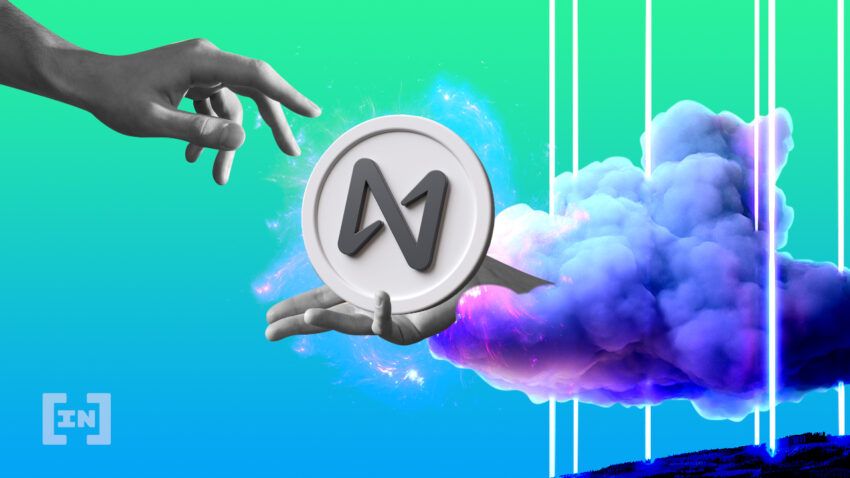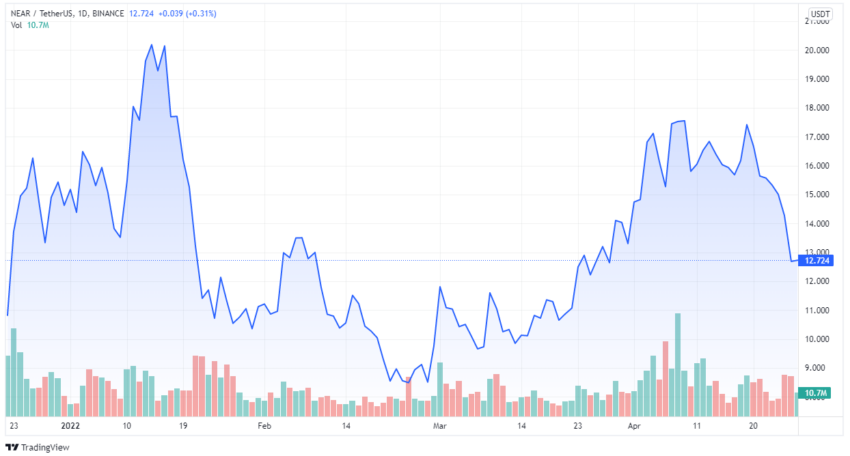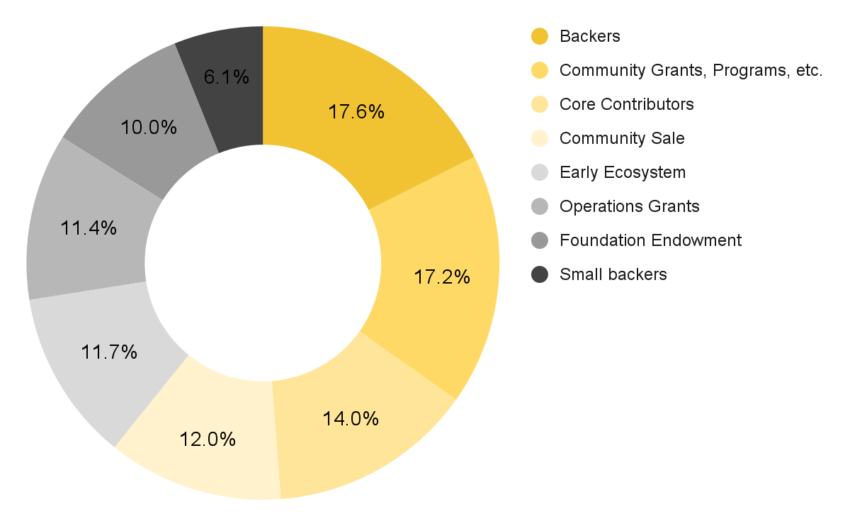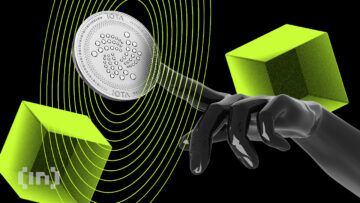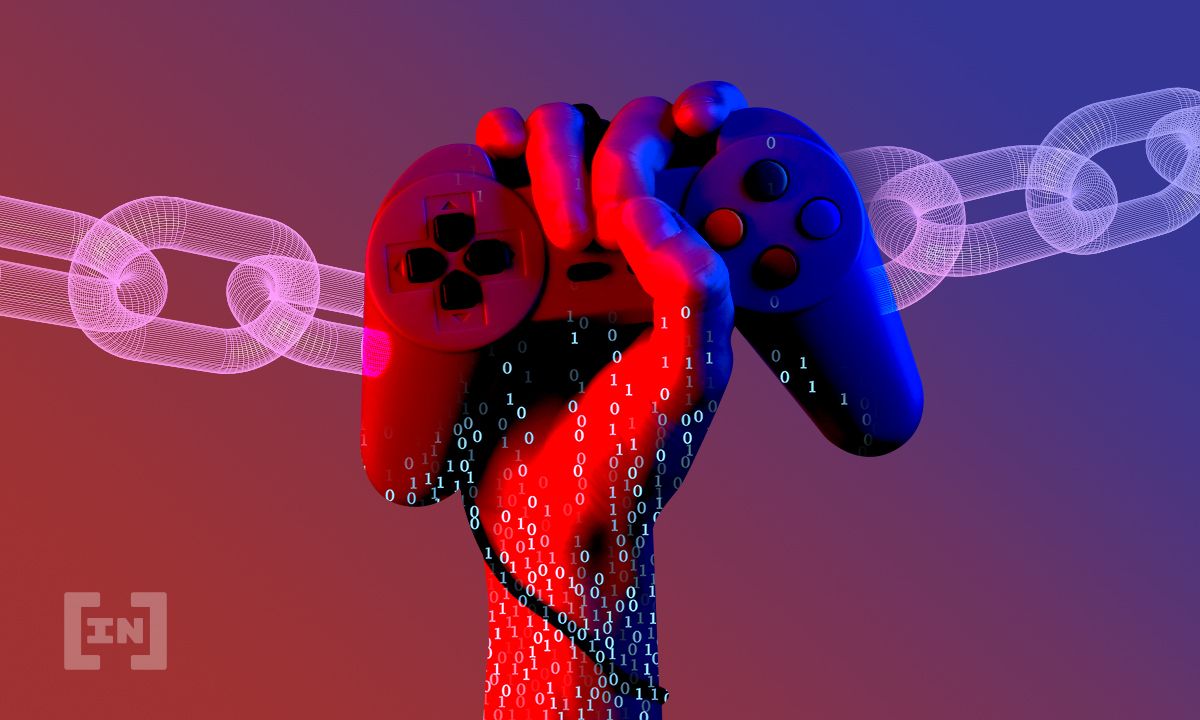Several crypto projects are working on creating scalable networks that can support various ecosystems. There are numerous technical aspects for this, and one particularly unique approach is being attempted by NEAR Protocol.
However, is NEAR Protocol a potential rival to Ethereum? Will its native token, NEAR, prove to be a good investment in the months and years ahead? Let’s dive into how the system work and how it can benefit regular crypto users.
In this guide:
- How NEAR Protocol Started
- What is the NEAR Protocol?
- Embracing PoW
- How does NEAR Protocol work?
- Security within the Rainbow Bridge
- NEAR Protocol use cases
- Polkadot and Zilliqa’s scalability solutions
- Roadmap and development history
- What is NEAR?
- NEAR token distribution
- Should you buy NEAR?
- How to buy NEAR?
- How to stake NEAR
- NEAR Protocol — a potentially revolutionary project
- Frequently asked questions
How NEAR Protocol Started

Illia Polosukhin and Alexander Skidanov co-founded NEAR Protocol in June 2017. The two have a background in math and computer sciences. The two Ukrainians were driven by a clear goal in creating their company. They wished to create a fully scalable blockchain solution. According to them, this was something that was missing from the crypto market at the time.
NEAR Protocol was designed as an easy-to-use platform where independent developers could run their DApps. To achieve this, Polusukhin and Skidanov embraced a Proof-of-Stake mechanism over the established Proof-of-Work system.
The two men founded the NEAR Foundation. Their company created and developed the NEAR blockchain. Its mainnet was launched in Apr. 2020. Network validators voted in Oct. 2020 to allow token transfers. NEAR’s bridge with Ethereum (known as the Rainbow Bridge), was launched in Mar. 2021. The Rainbow Bridge allows for information to be transferable from one network to the other.
Near Protocol was initially designed as a platform for machine learning. Near.ai was its initial name. While investigating, the two founders began learning about smart contracts as well as cryptocurrency. A shared fascination with blockchain technology began. The two computer scientists were driven to study more cryptography and learn more.
What is the NEAR Protocol?
NEAR Protocol is, essentially, a decentralized app platform. The platform focuses on the user and developer usability. It is seen by many as a competitor to Ethereum. Its blockchain is smart-contract-capable and endorses a PoS mechanism.
NEAR is the native token of the NEAR Protocol, and it’s used to store data on the platform as well as for transaction fees. And, NEAR owners may also use tokens for staking. This allows them to become transaction validators and contribute to network consensus.
Near was created by NearCollective. It is a community-run cloud computing platform that hosts decentralized applications. It is also, both user and developer-friendly. This is essential in establishing it as the go-to network for casual crypto users as well DApp devs.
NEAR Protocol’s blockchain aims to compete against other similar platforms using its sharding solutions. Its developers have branded it “Nightshade”. Sharding is a technology that has often been spoken about in the crypto community. For example, Ethereum 2.0 promises to introduce a similar concept.
NEAR utilizes a combination of horizontal scaling and a PoS consensus mechanism. It splits the network into parallel pieces and dynamically distributes computations to increase the network’s processing power.
Cross-chain interoperability
NEAR allows cross-chain interoperability via the Rainbow Bridge. It also includes a layer 2 solution it has dubbed Aurora. ERC-20 tokens, assets, and other assets can be seamlessly bridged from the Ethereum blockchain to the NEAR Protocol. This allows users to access higher transaction throughput while paying lower fees.
NEAR Protocol’s unique aspects
Near Protocol is, effectively, looking to compete with projects such as Ethereum and Terra Luna for the attention of crypto enthusiasts. To properly do this, it had to provide a different company philosophy to the ones of its rivals. Technological innovation and sustainable growth are part of NEAR Protocol’s core values. But, what are some of NEAR’s key features?
The concept of sharding is central to NEAR Protocol’s design. Sharding distributes segments of the blockchain rather than the entire blockchain among network participants. This technology is expected to improve the efficiency of data retrieval and scaling.
Nightshade is the name of the aforementioned sharding solution. This encourages efficient data processing. Basically, sharding is the process of splitting up the processing of transactions across multiple validator nodes. Each node will only process a fraction (TPS) of the network’s transactions.
Nightshade uses block producers and validators on NEAR to process transaction data simultaneously across multiple shards. Each shard will produce only a fraction of the next block. To finalize transactions, these parts are processed and stored on NEAR Protocol’s blockchain.
The protocol is also compatible with the Ethereum network. Rainbow Bridge is an app on NEAR that allows users to transfer ERC-20 tokens, stablecoins as well as NFTs between the NEAR and Ethereum blockchains. This bridge can be of tremendous use for typical crypto users, as well as developers.
Embracing PoW
The importance of sharding is best appreciated when seen through its absence from Ethereum’s current model. Sharding is meant to help with low transaction speeds, as well as excessive transaction fees.
Much of this is due to the PoW mechanism. The PoS model is considered superior by many analysts. This is one of the reasons why it is embraced by NEAR. With PoS users merely have to pledge their tokens to qualify for authenticating transactions on the network. If cryptocurrency is to become widely used, it needs to provide seamless solutions to users. NEAR Protocol looks to create the conditions for just such a thing.
How does NEAR Protocol work?
NEAR uses a delegated PoS blockchain. The network utilizes sharding to maximize performance. Near’s sharding system is different from other cryptocurrencies. Zilliqa and Polkadot’s blockchains use sharding, for instance. On NEAR, all shards are part of the same blockchain. They are not separate. NEAR can also be interoperable with the Ethereum network by using Rainbow Bridge.
As mentioned earlier, Nightshade is the mechanism that allows this process to happen. Nightshade adds a snapshot of each shard’s current state to every block on the NEAR blockchain. Each shard has its own set of validator nodes that broadcast the current state of each shard whenever a block is created.
Nightshade
Nightshade’s architecture is one of the platform’s greatest benefits. It allows for fewer points of failure in security. Participating nodes are responsible for maintaining smaller sections. This can help the blockchain be a truly scalable solution within the crypto world.
NEAR’s sharding solution greatly improves efficiency by creating something akin to a complex railroad system. The NEAR blockchain sits as the main station. The shards act as the railroad tracks that function in parallel and all reach the central point.
A mechanism called Doomslug is another important component of NEAR. This allows validator nodes to take turns creating blocks. Each turn lasts for 12 hours. NEAR generates a new block approximately every second.
NEAR blocks rewards are provided at a rate of 90% to delegator staking pool validators and staking validators. The remaining 10% goes towards the NEAR Treasury. This is currently managed and maintained by the NEAR Foundation.
Why is this all-important? Technically, Nightshade helps the NEAR blockchain to operate millions of transactions per second. What about transaction fees? These are at a low level.
Rainbow Bridge
NEAR Protocol’s Rainbow Bridge is an application that allows participants to quickly transfer Ethereum assets between Ethereum and NEAR. The Rainbow Bridge makes it possible to use any cryptographically proven information on NEAR within smart contracts on Ethereum.
To move tokens from Ethereum into NEAR Protocol, and vice versa, the user must first deposit tokens in an Ethereum smart contract. These tokens will then be locked. Then, new tokens are created on the NEAR Platform. These represent the original tokens. The smart contract stores the original funds in storage. However, it allows the user to reverse the process if they wish to retrieve the tokens.
Security within the Rainbow Bridge
Most bridges require that users trust an additional component, such as a validator set or miners, in addition to the base protocols. Rainbow Bridge requires users to trust only the validators and miners on each of the individual chains. This is, ultimately, great news for the developers. They can use Rainbow Bridge to benefit from the lower gas fees on NEAR without needing to create a new user base. All that is needed is their belief in Ethereum and NEAR’s security.
Rainbow Bridge could be just the beginning of interoperability between NEAR and other blockchains. The bridge was designed to be protocol-agnostic. Ultimately, it can serve as a communication tool between NEAR and any other chain that utilizes smart contracts.
Aurora
The Aurora Network gained a lot of attention within the developing NFT community. Many of the users attracted by the potential of NFTs were, however, put off by the transaction costs and slow confirmation speeds. A scaling solution, clearly, is needed to ensure that crypto transactions become more seamless. Aurora, which functions on NEAR’s network, offers to provide an answer to this problem.
Aurora is an Ethereum Virtual machine (EVM). It functions on the NEAR Protocol blockchain. As mentioned, its goal is to scale the Ethereum network. Developers can use this platform to run their apps on Ethereum-compatible, high throughput, scalable, and secure platforms at lower transaction costs. This is of great benefit both for the developers and their users. AURORA is the native token of this network.
The network offers Ethereum 1.0 developers a layer 2 solution that helps increase speed and scalability. Transactions occur in a matter of seconds because of the NEAR network. The Aurora Bridge also facilitates trustless transfers of ETH tokens between Aurora and Ethereum.
NEAR Protocol use cases
NEAR Protocol’s goal of creating a crypto ecosystem around its innovative technical solution is coming along nicely. Several high-profile crypto DApps have already been built on NEAR. And, the protocol is gaining interest from more and more developers. Flux, Mintbase, NPunks, and Paras are some of the projects that are utilizing the technology’s considerable potential.
Paras
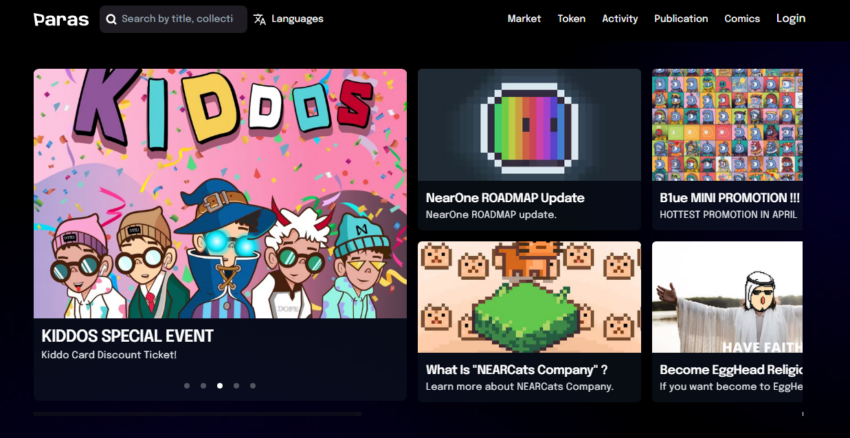
Paras is a marketplace for NFTs. It uses the IPFS/Filecoin and NEAR Protocol. Paras can offer the perfect combination of fast and low-cost transactions with efficiency and security thanks to NEAR.
NEAR transactions are quick (1 to 2 seconds) and cost-friendly at a mere few cents. Artists can quickly start. And, novice NFT buyers as well as experienced collectors can purchase and sell NFTs almost effortlessly. Paras endorsed NEAR because of the Rainbow Bridge. The bridge allows for the transfer of ETH from NEAR and vice versa.
PARAS is the native token of the platform. It has a total supply of 100 million. Exclusive events or DAO governance can use it. NFT-based games of some notoriety have already appeared on Paras. Galaxy Online, Metamon, and OP games are platforms that already utilize the NEAR-backed platform.
Paras connects all projects to its marketplace. It also supports secondary sales transactions. Paras aims to focus on a curated approach to NFTs and the community surrounding it.
Mintbase
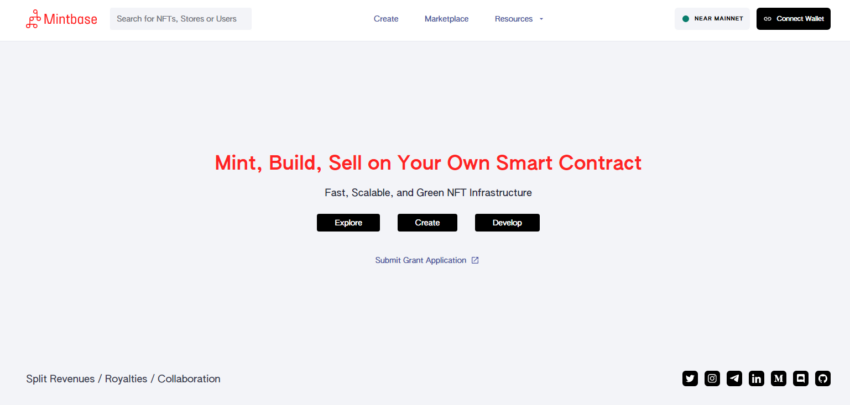
Mintbase is a global platform that strives to make NFT creation simple. Firstly, it does not require any technical knowledge. Users can sell their digital art, musicians can create and sell music NFT, and event organizers may use Mintbase to sell tickets.
Mintbase is a brand-new blockchain application. Its team is from Portugal. It aims to preserve digital ownership and prevent the scarcity of digital assets. To instantly mint non-fungible tokens (NFTs), the platform uses Ethereum’s ERC-721 token standards. These tokens are rare, unique, and transferable.
Mintbase’s first step in minting NFTs was to create a digital store that sells NFTs. The platform’s users needed to create a smart agreement and pay an Ethereum gas fee. The cost of creating a store quickly rose and now costs hundreds of dollars in gas charges. Mintbase advised its users to wait until gas prices dropped before creating new NFTs.
NEAR proved the better blockchain alternative. Its most important benefit is that NEAR gas fees are much lower than Ethereum’s. The NEAR Protocol makes it easier to build and deploy DApps and protocols faster than most other blockchain networks.
Flux
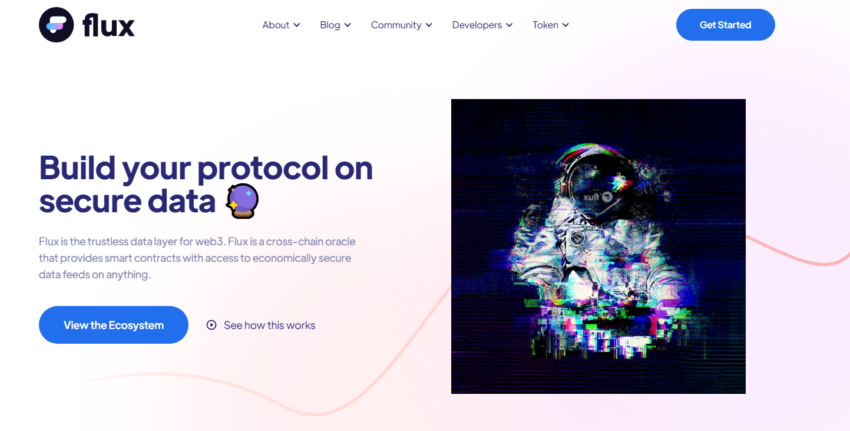
Flux is an open market protocol that was attracted to the NEAR network by its promise of quick, cheap, scalable solutions. Nightshade’s sharding design and Doomslug’s PoS mechanism provide just that.
The Flux team originally started their journey on Ethereum. However, they launched their product on NEAR. The protocol was officially launched in Aug. 2020, after 14 months of development. The project tried to build on Ethereum in the beginning stages of the project, but ran into security and cost issues. Simply put, NEAR provided a better, cheaper solution for Flux and for its future users.
Also, Flux released the $FLX token as part of its launch. This token will be crucial in powering its oracles. Flux has been able to create a decentralized, robust oracle that can provide a 30-minute resolution time for API data. It will help bring high-speed data feeds to cryptocurrencies, synthetics, and wrapped assets.
To connect to Flux SDK, developers require only a few lines of code. Many developers have already begun building applications on Flux. These range from weather and insurance decentralized apps to esports and market news providers. The Flux App is open-sourced. Developers can launch it in mere seconds.
NPunks
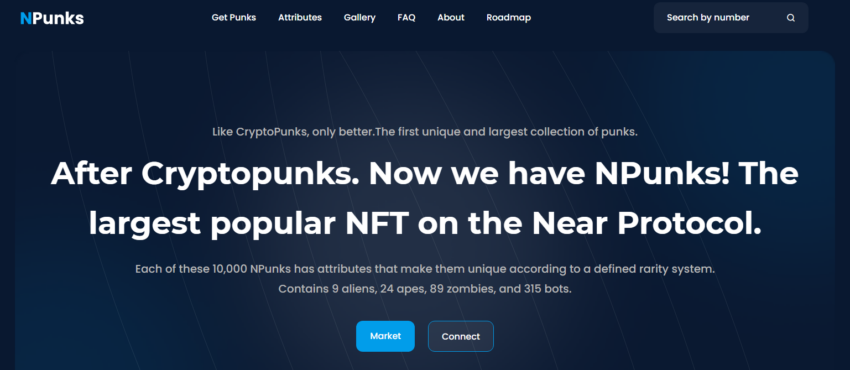
NPunks, as the name suggests, is an NFT collection that is based on the concept and popularity of the CryptoPunks collection. The project runs on the NEAR Protocol. The collection includes 10,000 NPunks. Each NFT has different attributes. This makes them unique.
The distinctive feature of the project is that NPunk purchases are random. In this way, the developers hope to create a more fair distribution of the NFTs. According to its roadmap, the project will continue to develop the platform. There will also be an airdrop for users who own more than 10 NPunks. Future incentives are in place. They can help nurture a dedicated community.
Similar to the other projects listed on our list, NEAR Protocol has been of assistance to the creation of NPunks. The small transaction fees and quick processing time are requirements. But, they aren’t always available. This NFT collection is another example of how NEAR’s sharding solution can be properly utilized.
Polkadot and Zilliqa’s scalability solutions
Polkadot may be the project that shares the most in terms of similarity with NEAR at present. It uses Parachain technology to ensure distributed database sharding.
Parachains are a simpler type of blockchain. These attach to the security provided by relay chains. Relay chains not only provide security for attached parachains. They also guarantee secure message-passing among them. Parachains are unique in that their computations are independent.
Zilliqa BFT seeks to implement sharding in a different way to Ethereum. Zilliqa’s proposal doesn’t use a central coordinator. However, it means that sApps will need to reside in most shards. This takes away its key advantage.
More projects using sharding will emerge as businesses seek to overcome the current limitations of blockchain technology. Blockchain will be more appealing to a wider audience if it addresses scalability problems. This will eventually lead to mainstream adoption. NEAR Protocol may just be ahead of the curve.
Roadmap and development history
Thus far, the NEAR Protocol team has managed to stick to a complex roadmap and timetable.
Alexander Skidanov and Illia Polosukhin first set about creating a team. This group created a scalable, mobile-first blockchain. It is fully sharded and permissionless.
NEAR’s multi-stage mainnet rollout began in Apr. 22, 2020. The Proof-of-Authority (PoA) consensus system establishes the network. NEAR Foundation, a non-profit organization that supports protocol development, operated the only nodes.
During Phase 1 NEAR began its onboarding of third-party validators. In Phase 2, the final planned stage in Near’s gradual mainnet rollout occurred. NEAR protocol’s governance responsibilities were transferred to the community in this second phase as a result of an on-chain governance voting. This stage also allowed token transfers to be unlocked and protocol rewards to be earned.
The NEAR Foundation developed The Rainbow Bridge in Apr. 2021.
For 2022, NEAR Protocol’s team promises complete decentralization. This will get the project fully ready for the Web3 experience. NEAR will also continue to upgrade its validation system and grow its ecosystem.
What is NEAR?
NEAR Protocol’s native token is NEAR. Token holders who are involved in the network consensus and act as transaction validators can stake NEAR tokens.
NEAR tokens are used primarily to pay transaction fees or as collateral for the storage of data on the blockchain. NEAR tokens also reward other stakeholders. Transaction validators are eligible for a NEAR token reward in each epoch. The rewards amount to 4.5% annually of the total NEAR supply.
Smart contract developers receive a percentage of transaction fees generated by their contracts. The rest of each transaction fee goes to the NEAR token. This increases its scarcity. NEAR also has a protocol Treasury. This receives 0.5% annually of the total NEAR supply to invest in the development and improvement of the ecosystem.
NEAR token distribution
The NEAR token exists in a fixed amount of one billion. The unmodifiable supply is an important characteristic that can determine the growth in value of the token. The circulating supply of NEAR at the moment of writing is nearly 600 million.
Should you buy NEAR?
Almost all evaluations suggest a strong bullish trend for NEAR. The potential for growth exists both in the short and long term.
As the NEAR ecosystem grows, the coin’s value will also be higher. The protocol is, undoubtedly, one of the more exciting projects in crypto. Purchasing NEAR currently would mean adhering to the project in its opening stages.
How to buy NEAR?
NEAR is available on most of the major crypto exchange services. Some of these exchanges are Binance, KuCoin, Huobi, and Gate.io.
Steps to purchase NEAR
The steps to purchase NEAR are relatively straightforward:
- First, open an account with the exchange where you wish to purchase the coin. You may need to pass the KYC to make your purchase.
- Secondly, consider opening a NEAR wallet, or purchasing a hardware wallet.
- Make your purchase on the exchange, or within the wallet. The amount will show in the place where you made your purchase. See the withdrawal details if you wish to remove NEAR from your exchange wallet.
How to stake NEAR
NEAR token holders can delegate their tokens to earn rewards. Staking helps secure the network and provides rewards. Delegating tokens means that users deposit and stake their tokens in a specific pool that has been activated by a validator.
NEAR uses the PoS system to achieve consensus among nodes within the network. To be eligible for participation, validators can stake their NEAR tokens with PoS. Token holders that do not wish to run a node may delegate their stakes to validators of choice.
NEAR Protocol — a potentially revolutionary project
Platforms that offer lower transaction costs and higher throughput are of vital importance in the crypto space. This is all the more true as mainstream adoption of crypto grows. NEAR’s scaling solutions are attractive to developers who want to create more efficient DeFi products.
The future looks bright for NEAR. But, can it be an Ethereum-killer? Can it become more popular than Polkadot? Perhaps, this is not the right way to judge its potential. While NEAR could become an industry leader, it is important to focus on what it can achieve right now.
Frequently asked questions
What is NEAR Protocol?
NEAR Protocol is a layer 1 blockchain that utilizes its innovative scalability solution using a sharding technology. Essentially, the platform offers a cheaper, quicker alternative to Ethereum. Furthermore, through the use of its Rainbow Bridge, transactions can be smoothly made from Ethereum to NEAR, and vice versa.
Is NEAR Protocol worth investing in?
NEAR Protocol has a unique sharding technology that ensures crypto scalability. Whether it is a good investment is anyone’s guess, so that decision is based on how the near future of the project plays out.
What blockchain is NEAR Protocol on?
NEAR Protocol runs on its own blockchain. NEAR’s greatest feature is its scalability which helps intermediate quicker, cheaper transactions as compared to Ethereum.
